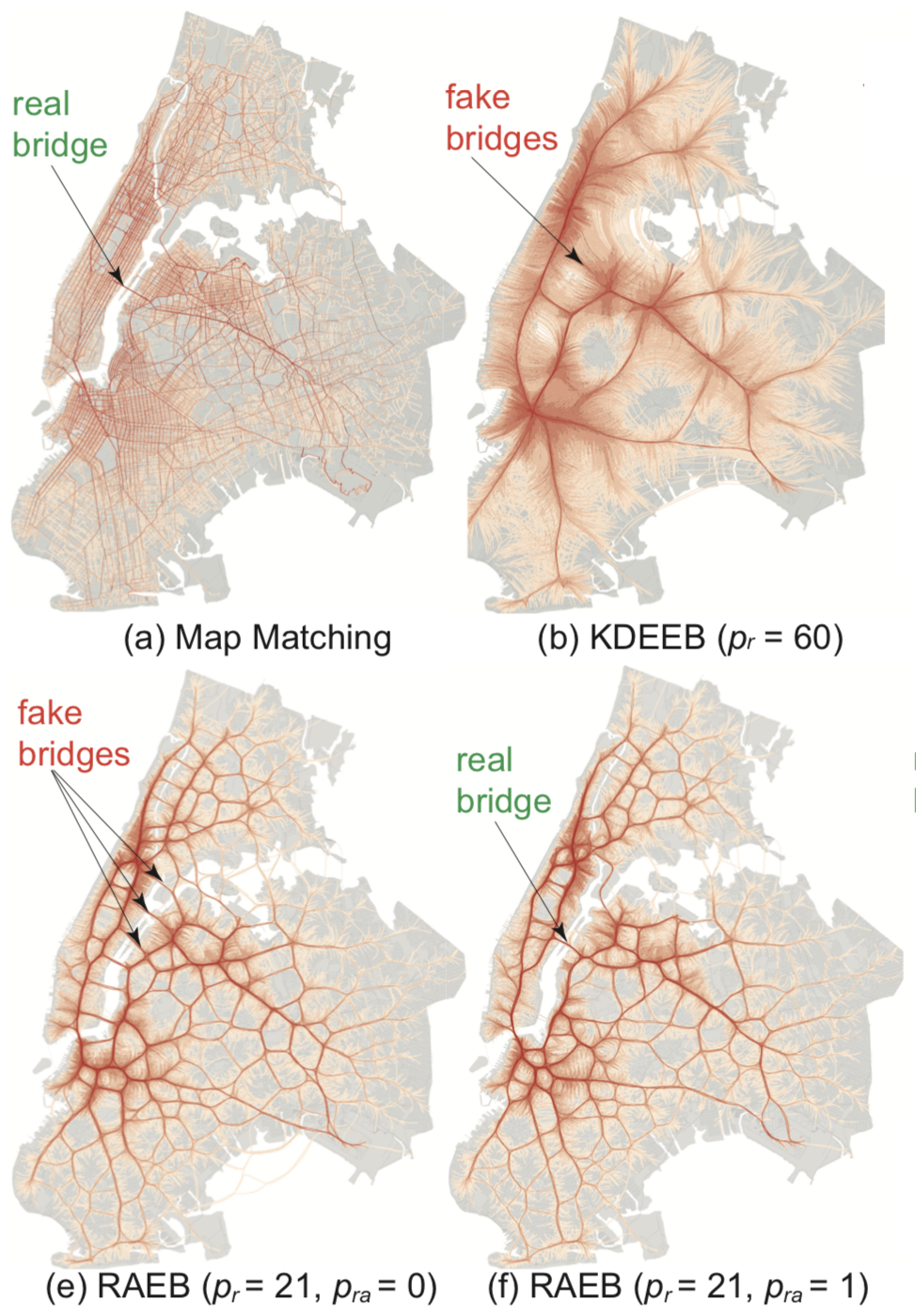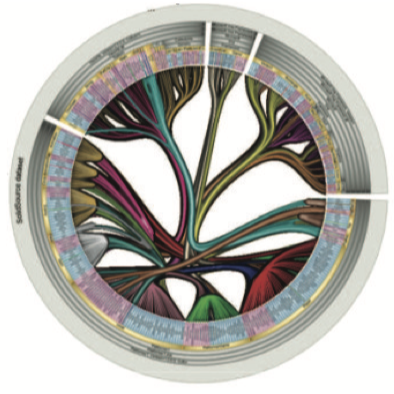Route Aware Edge Bundling for Urban Traffic Trails
Trail bundling is an effective technique for simplifying large trail (trajectory) sets for visualization. When the position of trails is not important for the analysis at hand, such as in flight datasets, generic bundling methods (such as CUBu or KDEEB) work very well. However, when trails are constrained, such as in urban movement data, such constraints must be incorporated into the bundling.
Method
We address the above by constraining KDEEB bundling by a spatial road map. Our method, called Route Aware Edge Bundling (RAEB), trades off simplification (performed by the original KDEEB bundling) with accuracy (respecting the road network). This way, users can decide how much they want to simplify their data depending on their concrete use case.
Results
The image below shows two simplification levels (bottom row) produced by RAEB on a dataset of New York taxi trips (100K trails), compared to map matching and plain KDEEB (top row). RAEB simplifies more than map matching, but less than KDEEB, while respecting the road network less than map matching but much better than KDEEB.

To our knowledge, RAEB is the first method that offers spatially-constrained trail bundling.
Publications
Route-Aware Edge Bundling for Visualizing Origin-Destination Trails in Urban Traffic W. Zeng, Q. Shen, Y. Jiang, A. Telea. Computer Graphics Forum 38(3), 2019
